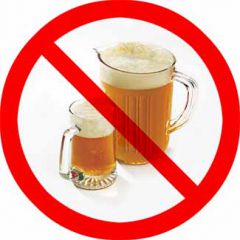Treating Alcoholism - Critical Concepts
The production of wine probably originated around 4000 to 6000 B.C. in the mountainous region between the Black and Caspian seas.
Commercial wine production was well underway by 1500 B.C. (Courtwright, 2001).
Alcohol is probably the oldest drug known to human beings. It was easy for primitive people to discover that fruits and juices, left to stand in a warm place, soon ferment into alcoholic mixtures. Production of alcohol depends on a one-celled organism, yeast, which is found almost everywhere. Yeast feeds on sugar, making alcohol and carbon dioxide as by-products. To grow yeast cells, you need water, sugar, and warmth.
The yeast cells continue growing until they use up all of the sugar or until the rising alcohol content kills them. That’s why the alcoholic content of wine can rise only so high before fermentation stops. Alcohol is a deadly poison, and in high enough quantities, it kills all living things, including the yeast cells that produce it (Weil & Rosen, 1998).
The extent of addiction in the world is horrific. Substance abuse is the nation’s number one health problem. Over a lifetime, 27% of the population will suffer from a substance abuse disorder (Kessler et al., 1994). Twentyfive percent of Americans will die of some form of substance abuse. Ninetyfive percent of alcoholics die of their disease, approximately 26 years earlier than their normal life expectancy. Heavy drinking contributes to illnesses in each of the top three causes of death: heart disease, cancer, and stroke.
Approximately two-thirds of American adults drink an alcoholic beverage during the course of a year, and at least 13.8 million Americans develop problems associated with drinking. Fifty percent of cases involving major trauma are alcohol related. Fifty percent of homicides are alcohol related.
 Forty percent of assaults are alcohol related. One hundred thousand Americans die of alcohol problems each year. More than 40% of those who start drinking at age 14 or younger become alcoholic. In 1998, the cost of alcohol abuse was more than $185 billion. Over many years of following alcohol and drug use, studies find that 80% of high school seniors have tried alcohol, and 32% have gotten drunk in the past 30 days. The average 18-year-old has seen 100,000 television commercials encouraging him or her to drink. The patients who are most vulnerable to excessive alcohol and drug abuse are young adults between the ages of 18 and 25. They have the highest incidence of alcohol and drug use, but no age group is omitted from falling victim to the problem. More alcoholism is being found in the elderly now that more baby boomers are retiring. Classical alcoholism takes about 15 years to develop, but it can happen much quicker in adolescents and young adults.
Forty percent of assaults are alcohol related. One hundred thousand Americans die of alcohol problems each year. More than 40% of those who start drinking at age 14 or younger become alcoholic. In 1998, the cost of alcohol abuse was more than $185 billion. Over many years of following alcohol and drug use, studies find that 80% of high school seniors have tried alcohol, and 32% have gotten drunk in the past 30 days. The average 18-year-old has seen 100,000 television commercials encouraging him or her to drink. The patients who are most vulnerable to excessive alcohol and drug abuse are young adults between the ages of 18 and 25. They have the highest incidence of alcohol and drug use, but no age group is omitted from falling victim to the problem. More alcoholism is being found in the elderly now that more baby boomers are retiring. Classical alcoholism takes about 15 years to develop, but it can happen much quicker in adolescents and young adults.
With all of this bad news, we have strong evidence that treatment works. For every dollar spent on recovery, the economy saves $7 in health care and cost to society. Most patients who work the program of recovery stay clean and sober (Gordis, 2003; Monitoring the Future Study, 2000; NIAAA, 1997; Stein, 2001).
###
Robert R. Perkinson, PHD
Helping Your Clients Find the Road to Recovery
Alcoholism - Treatment. I. Title.
RC565.P375 - 2004
616.86’10651- dc22